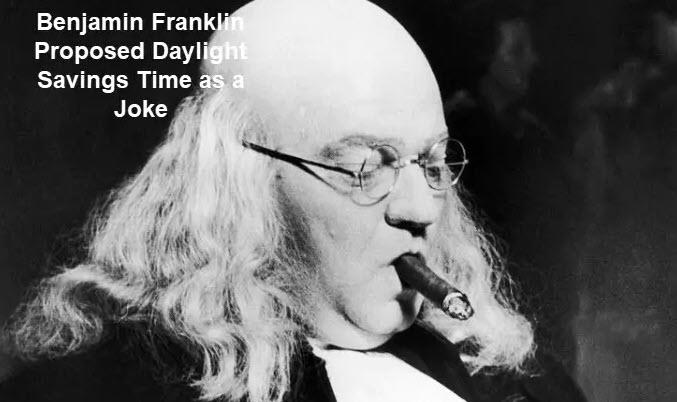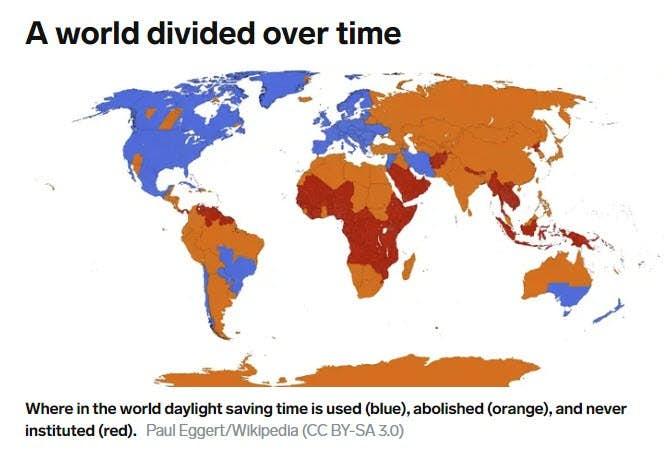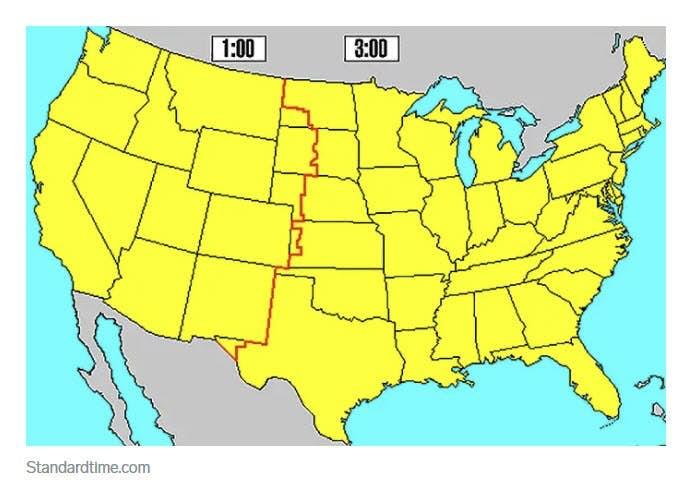Does Daylight-Savings Time Make Any Sense?
Authored by Mike Shedlock via MishTalk,
On Sunday, November 3, those on Daylight Savings Time need to adjust their clocks. Does this make any sense?
Hell to Pay
It’s nice when you gain an hour of sleep. But it seems like hell when you lose one.
Only a Joke
Many don’t know this but Benjamin Franklin proposed Daylight Savings Time as a Joke.
In case every news anchor on your television screen telling you to “spring forward” hasn’t been enough of a reminder, Sunday marks the start of Daylight Saving Time, a bizarre routine in which most Americans’ iPhones automatically steal an hour of sleep from them.
The act of moving the clock an hour forward in an effort to save time in the sun during the warmer months is almost always credited to Philadelphia’s most famous son, Benjamin Franklin.
Here’s the thing: when Franklin wrote to Paris about “diminishing the cost of light,” he wasn’t being serious. He was making a joke.
The letter Franklin wrote anonymously to Parisians about making better use of daylight was satirical. Per The History Channel:
By the time he was a 78-year-old American envoy in Paris in 1784, the man who espoused the virtues of “early to bed and early to rise” was not practicing what he preached. After being unpleasantly stirred from sleep at 6 a.m. by the summer sun, the founding father penned a satirical essay in which he calculated that Parisians, simply by waking up at dawn, could save the modern-day equivalent of $200 million through “the economy of using sunshine instead of candles.”
Oh, and the best part? As History notes, Franklin wasn’t even suggesting the idea of Daylight Saving Time. All he was doing was making fun of the French and suggesting they get out of bed earlier.
Joke or Not
Joke or not we are still stuck with the ritual.
And twice every year a debate takes place.
Pros and Cons Take 1
Please consider Top 3 Pros and Cons of Daylight Saving Time
Top 3 Pros
-
Daylight Saving Time’s (DST) Longer Daylight Hours Promote Safety.
-
DST Is Good for the Economy.
-
DST Promotes Active Lifestyles.
Top 3 Cons
-
Daylight Saving Time (DST) Is Bad for Your Health.
-
DST Drops Productivity.
-
DST Is Expensive.
Never Ending Debate
People in favor of keeping Daylight Saving Time say it allows drivers to commute more safely in daylight, promotes outdoor activities, and stimulates the economy. Those who oppose Daylight Saving Time say that the change is a harmful disruption to health and work productivity, and is expensive. While the time change was initially implemented to save energy, studies are mixed and have found our current use of air conditioning and heating may negate the energy saved by not having to use electric lights and may actually increase electricity usage.
What Really Happened?
-
Benjamin Franklin is often credited with the idea of DST because, in a satirical letter to the authors of The Journal of Paris, he suggested the French wake earlier to take advantage of “using sunshine instead of candles.”
-
DST as we know it was proposed by a New Zealand entomologist, George Vernon Hudson, who wanted longer hours for insect study.
-
The first locality to enact DST was Port Arthur (now Thunder Bay, Ontario), Canada, in 1908. The first country to enact DST was Germany on Apr. 30, 1916, although the Germans dropped the time change at war’s end.
-
American farmers were opposed to DST because, regardless of what the clock said, their cows weren’t ready to be milked until later in the day during DST.
-
A resort in Madagascar created its own DST, which runs an hour ahead of the rest of the country, so the lemurs would “naturally join us in the Oasis garden… for the ‘5 O’clock tea.'”
-
Some ancient civilizations are known to have used practices similar to DST. Roman water clocks, for example, used different scales for different times of the year.
Hero or Goat?
Benjamin Franklin was joking, but the unsung hero (or goat) was New Zealand entomologist, George Vernon Hudson, who wanted longer hours for insect study.
Who is Affected?
Approximately 1.5 billion people in 70 countries observe DST worldwide. In the United States, 48 states participate in Daylight Saving Time. Arizona, Hawaii, some Amish communities, and the American territories (American Samoa, Guam, Puerto Rico, the Virgin Islands, and the Northern Mariana Islands) do not observe DST. As of Mar. 4, 2019, at least 44 bills to change daylight saving were being actively considered in 24 states. 55% of Americans said they are not disrupted by the time change, 28% report a minor disruption, and 13% said the change is a major disruption.
World Divided Over Time
Curse Against Humanity
Business Insider comments Daylight-Saving Time is a Curse Against Humanity.
More than 152,560 people have petitioned Congress to end daylight-saving time. Some of the comments on the petition are practical appeals.
Get Rid of DST?
I am all in favor. Are you?
But how?
Standardtime.com has a peculiar suggestion.
Imagine you are right on the border of that line. Crossing the line would change the time by two hours.
That will never fly.
Change Which Way?
Assume a more practical “no change”. But which way?
-
Perpetual DST
-
Perpetual Regular Time
-
Double DST
Less than half are happy with the damn clock-change ritual, but there is no consensus how to fix it.
Some want two time zones. Some want double DST (perpetual DST but a two hour shift), and some simply want to kill the whole damn thing.
My preference in order
-
Perpetual Regular Time
-
Perpetual DST
-
DST
Double DST and standard time are simply too bizarre to rank.
Tyler Durden
Sat, 11/02/2019 – 16:30
via ZeroHedge News https://ift.tt/2WC7HiN Tyler Durden


